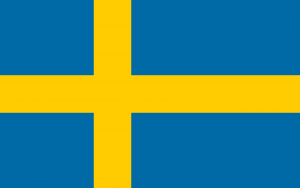Difference between revisions of "Language/Swedish/Grammar/Personal-pronouns"
Jump to navigation
Jump to search
m (Quick edit) |
m (Quick edit) |
||
| Line 2: | Line 2: | ||
{| class="wikitable pg_template_nav" | {| class="wikitable pg_template_nav" | ||
|[[◀️ | |[[Language/Swedish/Vocabulary/Going-to-a-restaurant|◀️ Going to a restaurant — Previous Lesson]] | ||
|[[Language/Swedish/Grammar/Reflexive-pronouns|Next Lesson — Reflexive pronouns ▶️]] | |[[Language/Swedish/Grammar/Reflexive-pronouns|Next Lesson — Reflexive pronouns ▶️]] | ||
|} | |} | ||
| Line 81: | Line 81: | ||
{| class="wikitable pg_template_nav" | {| class="wikitable pg_template_nav" | ||
|[[◀️ | |[[Language/Swedish/Vocabulary/Going-to-a-restaurant|◀️ Going to a restaurant — Previous Lesson]] | ||
|[[Language/Swedish/Grammar/Reflexive-pronouns|Next Lesson — Reflexive pronouns ▶️]] | |[[Language/Swedish/Grammar/Reflexive-pronouns|Next Lesson — Reflexive pronouns ▶️]] | ||
|} | |} | ||
</span> | </span> | ||
Latest revision as of 17:06, 29 March 2023
| ◀️ Going to a restaurant — Previous Lesson | Next Lesson — Reflexive pronouns ▶️ |
ett pronomen (pronomenet) - pronoun[edit | edit source]
Hej! Swedish learners 😀
➡ In today's lesson, we are going to learn the Personal Pronouns.
Feel free to edit this wiki page if you think it can be improved.
Happy learning!
| Svenska | Translation |
|---|---|
| jag | I |
| du | you |
|
|
| vi | we |
| ni | you |
| de | they |
Videos[edit | edit source]
How to say YOU in Swedish and more - Swedish personal pronouns ...[edit | edit source]
Learn Swedish, Lesson 8: Personal Pronouns - YouTube[edit | edit source]
Swedish Lesson: Grammar Lesson 1 Personal Pronouns ...[edit | edit source]
Other Lessons[edit | edit source]
- Be Polite
- How to Use Have
- Common Interjections
- Future Tense
- Time References
- Imperative Tense
- Nouns
- Definite Articles in Swedish
- Conditional Tense
- How to Use Be
- Indefinite Articles in Swedish
- How to Get Someone's Attention
- How to express ownership
- How to express our feelings
| ◀️ Going to a restaurant — Previous Lesson | Next Lesson — Reflexive pronouns ▶️ |
